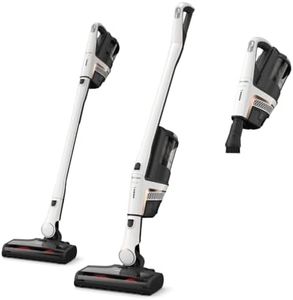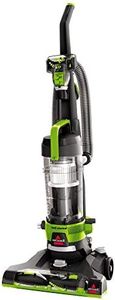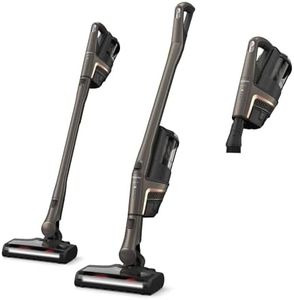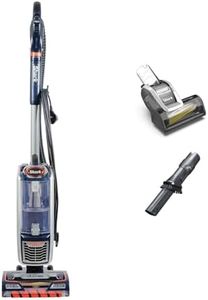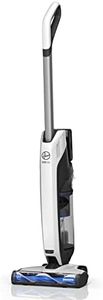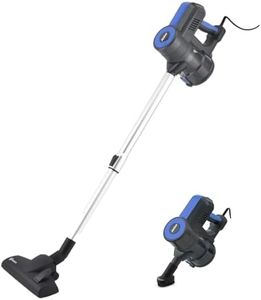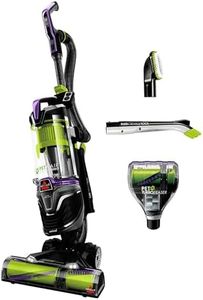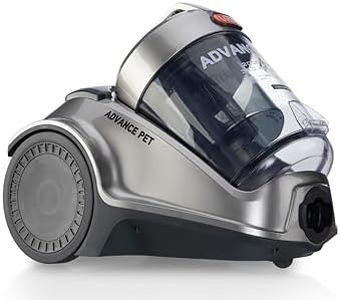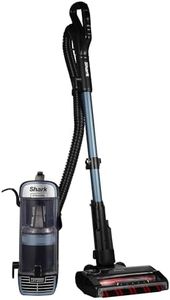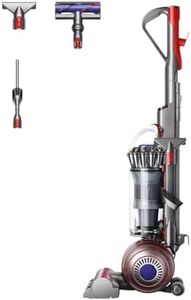We Use CookiesWe use cookies to enhance the security, performance,
functionality and for analytical and promotional activities. By continuing to browse this site you
are agreeing to our privacy policy
10 Best Bagless Upright Vacuum Cleaners
From leading brands and best sellers available on the web.Buying Guide for the Best Bagless Upright Vacuum Cleaners
Choosing the right bagless upright vacuum cleaner can make household cleaning much easier and more efficient. The key is to understand what features matter most for your specific living environment and cleaning habits. Since bagless models collect dirt in a dustbin instead of a replaceable bag, they can be cost effective and easy to maintain. To select the best fit, pay attention to the design, dust capacity, filtration system, suction power, weight, and ease of use, making sure they align with your home size, floor types, and personal preferences.Suction PowerSuction power measures how effectively a vacuum can pick up dust and debris. It’s crucial because higher suction usually means better cleaning, especially on carpets or for pet hair. Suction power can be rated in air watts or just described as 'high/medium/low.' For mainly hard floors or light cleaning, lower suction may suffice, but for thick carpets or heavy messes, you’ll want a machine with strong suction. Think about your floor types and the usual messes to help guide you.
Filtration SystemThe filtration system determines how well the vacuum traps dust and allergens. HEPA filters are great for allergy sufferers as they capture tiny particles, while standard filters suffice if allergies aren’t a concern. If someone in your home is sensitive to dust or pets, prioritize models with advanced or HEPA filtration to keep your air clean. If not, a standard filter might be enough, and it will be easier to maintain.
Dustbin CapacityDustbin capacity refers to how much dirt and debris the vacuum can hold before you need to empty it. Smaller bins mean more frequent emptying—a hassle in larger homes or during deep cleans. Large bins are convenient but can make the vacuum heavier. If you clean a small space or don’t mind emptying often, a small to medium capacity will work; for bigger homes or those who prefer less interruption, look for a larger bin.
WeightWeight affects how easy it is to push, carry, or maneuver the vacuum. Lighter vacuums are better for people with stairs or who need to move their vacuum often, while heavier models might offer more features but can be cumbersome. If mobility or ease of movement is important to you, choose a lighter model. If you plan to mostly leave your vacuum on one floor, a heavier but robust one may be fine.
Brush Roll TypeThe brush roll is the rotating part that helps lift dirt, especially from carpets. Some vacuums allow you to switch the brush roll on or off or adjust its height, which is helpful if you have both hard floors and carpeting. If you have mostly carpeted areas, a powerful brush roll is a priority. For homes with a mix, adjustable features give you flexibility; for only hard floors, a gentle or soft brush roll is best to avoid scratching.
Ease of MaintenanceEase of maintenance covers how simple it is to empty the dustbin, clean the filters, and check for blockages. Some vacuums provide tool-free access to the dustbin and washable filters, making upkeep stress-free. Look for models with features like easy-release dustbins and reusable filters if you want low-maintenance cleaning. If you don’t mind some extra effort, this may be less important.
Attachments and AccessoriesAttachments such as crevice tools, dusting brushes, and pet hair tools expand your vacuum’s cleaning capability. Think about your home’s needs—pet owners or families with kids might benefit from special pet or upholstery tools, while homes with lots of nooks and crannies will need a good crevice tool. Choose a model that comes with attachments matching the spaces and surfaces you need to clean.
Cord Length and Cord ManagementCord length impacts how far you can clean before changing outlets, and a longer cord is helpful for larger areas. Some vacuums also have retractable cords or hooks for easy winding. Consider the size of the areas you typically clean—large rooms are easier to tackle with a longer or automatically managed cord, while for small rooms this is less of a concern.
